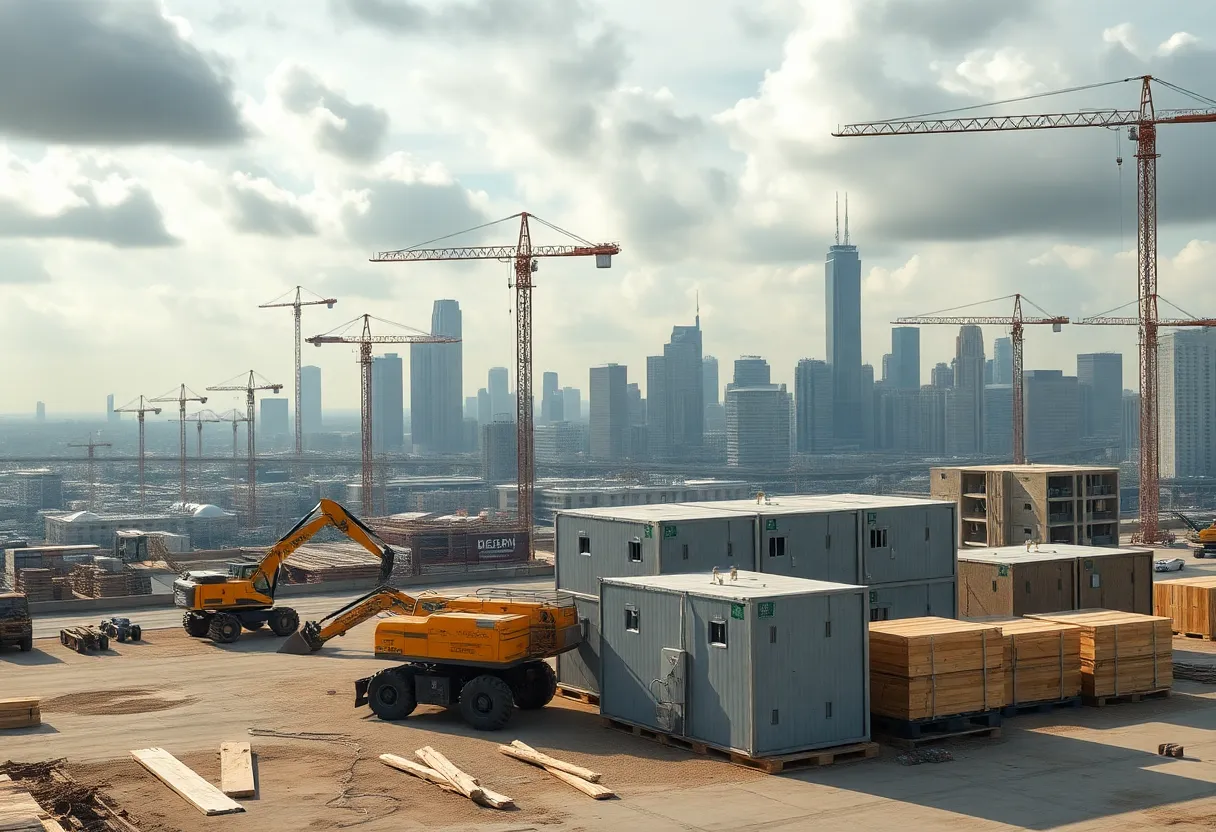Global, September 2, 2025
News Summary
Two scientific articles and several industry case studies chart rapid advances in digital twin technology for buildings and river basins. One paper proposes an MD‑DTT‑BIM framework that fuses BIM, IoT, AI and real‑time simulation and reports lab gains above 95% on multiple metrics using the CUBEMS dataset. A review argues basin‑scale twins need denser data, tightly coupled multi‑physics models and fair governance to improve flood forecasting and planning. Industry projects — from a radar tower virtual twin to national 3D mapping and rail works — show model‑based workflows cutting costs, time and errors. Authors call for broader field tests and equitable scaling.
Multi‑Dimension Digital‑Twin Advances Highlight Strong Gains for Smart Buildings and River Basins, with Calls for Equity‑Focused Widening of Digital Twins
Two recent peer‑reviewed studies show how digital twins are moving beyond single‑purpose simulations to multi‑dimensional platforms that connect real‑world data, simulation, and predictive analytics across entire lifecycles. In the building sector, a Multi‑Dimensional Digital Twin Technology‑assisted Building Information Modeling framework called MD‑DTT‑BIM demonstrates striking improvements in operational efficiency, real‑time monitoring, energy use and occupant comfort. In the water sector, a paper on digital twinning of river basins argues for full‑scale basin digital twins to enable forecasting, early warnings, scenario testing and more equitable management, while acknowledging major hurdles in data quality, model coupling and cross‑border collaboration.
Overview: MD‑DTT‑BIM for intelligent buildings
The MD‑DTT‑BIM concept fuses building information modeling (BIM), IoT, digital twin technology and artificial intelligence to connect structural, environmental and security subsystems. It aims to support real‑time monitoring, energy efficiency and intelligent decision‑making across a building’s life, from design to operation and maintenance. The approach relies on real‑time data integration, simulation and predictive analytics to improve planning and management for both construction projects and facilities.
In the architecture described, the system links BIM, IoT, DT and AI through modular components, enabling interoperability across infrastructure types and a modular deployment strategy. The design emphasizes edge computing and AI‑driven anomaly detection to cut sensor‑to‑DT latency, while Bayesian inference and Kalman filtering help reduce data uncertainty.
Experimental results reported in the Sci Rep paper include 97.6% gains in operational efficiency, 96.7% improvement in real‑time monitoring accuracy, 95.3% reduction in energy consumption, 94.3% rise in occupant satisfaction, and 98.3% accuracy in indoor environmental quality prediction, when compared to benchmark models such as SVR‑GA, SAGA, MAT and INOF. The study draws on the Kaggle dataset CUBEMS — Smart Building Energy and IAQ for validation, based on a seven‑story Bangkok office building with 11,700 square meters of floor space, 33 zones, and one‑minute data over 18 months.
The architecture is described with explicit components: VG (virtual entity of construction components), PG (physical entity of construction), DG (twin data fusing virtual and physical), SG (construction process service system), MG (existing project management systems), and CG (interrelations). A high‑level sequence shows the User Interface → Digital Twin System → Multi‑dimensional Model Engine → Data Management System → Simulation Engine → Construction Equipment → Feedback System → Digital Twin System → User Interface, culminating in a comprehensive report.
The study explicitly notes assumptions and caveats, including sensor accuracy ranges (temperature ±0.5 °C, humidity ±2% RH) and latency expectations (<10 ms) that may drift under real deployment, with potential temperature drift up to 1.5 °C, humidity drift up to 5%, and longer latency under load. It also discusses strategies to mitigate data problems, such as adaptive error correction, redundant sensors, Kalman filtering, Monte Carlo simulations, and reporting confidence intervals (for example, energy reduction with 95% confidence).
River basins digital twins: full‑scale, sustainable and equitable water management
The npj Natural Hazards paper argues that digital twins for river basins hold great promise for forecasting, early warning, rehearsals and scenario planning, but warns that data gaps, weak model coupling and uneven governance threaten equity and effectiveness. The authors propose a layered architecture that includes a Data Hub, a Model Hub, and a Data Infrastructure that can operate as Data‑as‑a‑Service, with a user interface designed for multiple stakeholders and multi‑scale integration with broader digital twins for climate, health and urban systems.
The article points to recent mega‑flood events as motivation and documents a national push toward basin digitalization, including a 2022 campaign aimed at seven major basins in China with a 2030 target, plus the EU’s Destination Earth project. It highlights the need for dense instrumentation and advanced sensing, including MEMS sensors and smart particles to monitor sediment transport and bed stability, and calls for tighter coupling of multi‑physics models (hydrology, hydraulics, sediment transport, water quality, ecosystems) with data exchange standards like OpenMI. The authors also stress edge computing and HPC to enable real‑time interaction and interpretability improvements through symbolic regression, SINDy and visualization tools.
Equity is a central theme: less‑developed countries face higher vulnerability due to gaps in infrastructure and capacity. The paper cites events such as the 2022 Pakistan floods and the 2023 Derna disaster in Libya to illustrate the human and economic costs. It advocates for transboundary collaboration, training, technology transfer and policy mechanisms to reduce digital water inequities, along with a push for multilateral digital twin systems that support SDGs related to water, climate and resilience.
Industry adoption: case studies and measurable savings
A synthesis of industry coverage traces where digital twins are delivering tangible gains. In a fully underground 220 kV substation project in central China, digital workflows cut land use by more than half, avoided numerous reworks and saved millions of yuan. In the oil and gas sector, asset performance management digitalization cut maintenance costs and reduced failures. A high‑speed rail project in Southeast Asia reported hundreds of millions in construction cost savings and faster schedules through integrated BIM and digital twin workflows. In New Zealand and the UK, collaborative modeling reduced design time and material waste, with significant cost savings. A Singapore program built a national 3D digital twin that saved millions and shaved a year off data capture and processing. In water and wastewater, cloud‑based federated modeling and multi‑package coordination improved engineering quality and collaboration.
Across these cases, the common theme is that digital twins deliver concrete efficiency and reliability benefits, while underscoring the need for robust data governance, standardized interfaces and coordination across teams and organizations.
Notes on data, funding and openness
Both the MD‑DTT‑BIM and river‑basin papers emphasize open access to research outputs and datasets where possible, with datasets sometimes available on request. The MD‑DTT‑BIM work notes specific funding sources and institutional affiliations, while the river‑basin study highlights national and international research programs and the role of public‑private collaboration in advancing digital water twin capabilities.
Conclusion: a growing but uneven landscape
Taken together, these studies show that digital twins are expanding from design tools to end‑to‑end management platforms that can profoundly affect how buildings operate and how basins withstand hazards. The promise includes substantial performance gains, improved monitoring, and stronger resilience, but the path forward requires addressing data gaps, ensuring equitable access, and aligning governance and incentives across borders and sectors.
FAQ
- What is the core idea behind MD‑DTT‑BIM?
- The concept combines BIM, IoT, digital twins and AI to create a multi‑dimensional platform that supports real‑time monitoring, energy efficiency and intelligent decision‑making for building design, operation and maintenance.
- What performance gains were reported for the MD‑DTT‑BIM framework?
- Reported gains include ~97.6% operational efficiency improvement, ~96.7% accuracy in real‑time monitoring, ~95.3% energy reduction, ~94.3% higher occupant satisfaction, and ~98.3% accuracy in predicting indoor environmental quality.
- What are the main obstacles to basin‑scale digital twins?
- Major obstacles include deficient data, poorly coupled multi‑physics models, and disordered transboundary collaboration that can deepen inequity if not addressed with governance and cooperation.
- What kinds of industry cases illustrate digital twin adoption?
- Industry examples cover underground substations, asset performance management, integrated high‑speed rail projects, expressways, city 3D mapping, and water treatment facilities, all showing cost savings, schedule improvements and quality gains.
- What future work is suggested for digital twins in water basins?
- Suggestions include expanding multilevel and geographically diverse datasets, refining performance measures, integrating edge computing, exploring data security and federated learning, and strengthening governance and training to reduce inequities.
Key features at a glance
| Feature | Description |
|---|---|
| MD‑DTT‑BIM integration | Combines BIM, IoT, digital twins and AI for end‑to‑end building management and optimization. |
| Real‑time data and edge computing | Reduces latency between sensors and the digital twin to enable prompt decision‑making. |
| Uncertainty management | Uses Bayesian inference and Kalman filtering to handle data gaps and noise. |
| Performance claims | Reported improvements in efficiency, monitoring accuracy, energy use and occupant comfort in validation studies. |
| River basin digital twins | Proposes a Data Hub, Model Hub and Data Governance to enable full‑scale, equitable basin management and disaster mitigation. |
| Equity and governance focus | Addresses Global South vulnerability and cross‑border collaboration as essential components of digital twin strategies. |
| Industry case studies | Showcases measurable savings across substations, rail, water treatment and urban mapping projects. |
Deeper Dive: News & Info About This Topic
Additional Resources
- PR Newswire: Wuhan City Operation Center and Huawei jointly launched a global demonstration site
- Google Search: Wuhan Huawei smart city demonstration site
- Nature: Framework for basin-scale digital twins (npj Natural Hazards)
- Encyclopedia Britannica: river basin digital twin
- Scientific Reports: MD‑DTT‑BIM building digital twin framework
- Google Scholar: MD‑DTT‑BIM digital twin building
- Electronic Design: Building digital twins to boost power density
- Google News: digital twins power density
- Dassault Systèmes (3DS): CSADI Smart Construction customer story
- Google Search: CSADI smart construction 3DS digital twin





